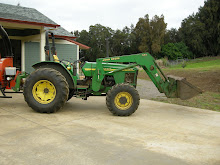PauHana2 has replaced PauHana (12/2000). This place seems to kill computers. I have three system units here that are dead and need to be recycled.
But the point of this post is that the new computer cost so much less (about $700) than the one that it replaced (about $3,000) and why.
Computers that run the current generation of Windows (XP and Vista) cannot use more than 4GB of main memory (the actual number is less and varies from as little as about 2.5GB to about 3.25GB for reasons that relate back to the 640KB limit of the original PC that had a 1MB address space). This is bad news on many levels -
memory is cheap - even at inflated prices charged by Dell a maximum memory configuration is only about $200 - probably spent 4x that for memory last time
I can't buy more memory - as system capability grows, so does memory consumption. With IE 7 I now have about 7 window tabs open - something I would not have considered before. Digital camera images are large and camera movies are larger (I recorded an Emily howl session and the file is almost 100MB). The old rule of thumb was that the OS should take perhaps 10% of the system memory. With a "modern" system this a bit fuzzier (is IE part of the system?) so the baseline could be a bit higher. As I write this, about 50% of the memory on this system is consumed by "system" stuff. I should have at least an 8GB memory system, but I can't. If I used this system for serious work (or serious picture or video processing) 16GB or 32GB would be reasonable and would also still be within my $700 memory budget.
This memory limit is architectural and has its roots in the same problem that resulted in Eagle and FHP. The interesting thing is that all of the same issues are being played out now (about 30 years later).
Intel did their FHP thing (build a new system that is much better in many ways but completely incompatible with anything from the past). The new Intel CPU is called Itanium. Heard of it? I didn't think so.
AMD produced the Eagle equivalent (compatible extension of existing hardware). Their architecture is an extension to the x86 is designated x64. The x64 architecture won and essentially all of the Intel and AMD processors made in the last two years have this capability (support for MUCH more memory - at least 65,536 times as much and inherently faster processing).
But you still haven't heard about it and can't take advantage of this because Microsoft hasn't done a good job of making a version of Windows that can do what AOS/VS could do - run the old software and the new software on the same system at the same time. Sad really. It is an opening for someone else to attack Microsoft's hold on the market, but it looks like no one is going to take this opportunity (and the next opening won't happen for a long - long time).
Saturday, April 19, 2008
Subscribe to:
Post Comments (Atom)

2 comments:
Wait. Why can't you buy more memory? I want more memory on my computer - are you saying I can't do it? I'm confused (admittedly not hard to do).
Like all things computer the answer is always "it depends", but generally a WindowsXP or Vista computer will not take advantage of more than about 3GB of memory. It is usually the case that it is possible to install more than 3GB, but if you do Windows won't use the extra.
Windows Vista Ultimate Edition in 64 bit mode will use more - I think Microsoft has set a limit of 64GB unless you buy the more expensive "server" version and then the limit is much larger.
Post a Comment